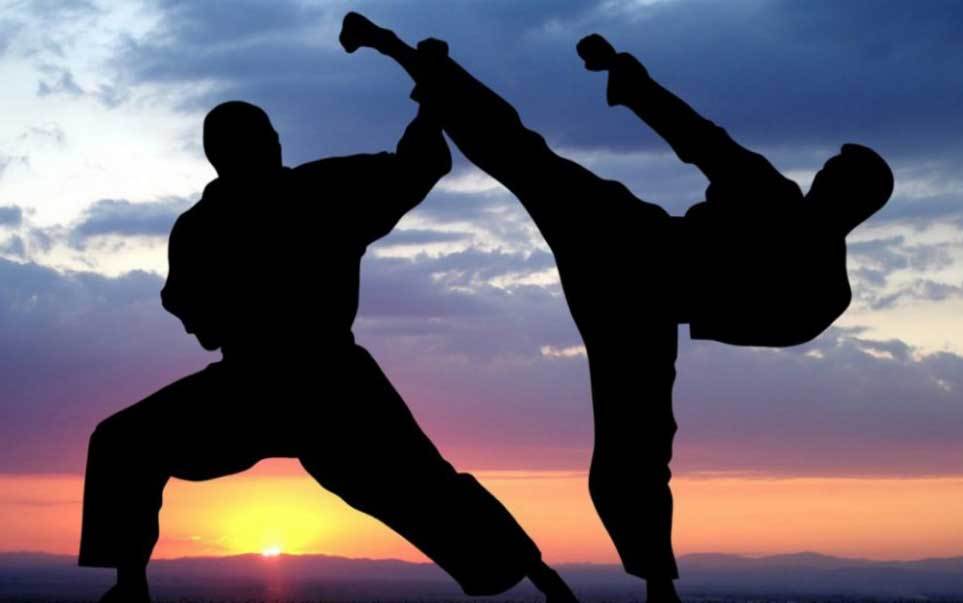This article will show you the differences between different types and levels of martial arts belts. The most commonly used belt levels are Blue belt (Black belt), and White belt. Here are some reasons why you should upgrade your belt, and how to do so. Having the proper belt level will allow you to demonstrate your progress and show off your skills. Read on to learn about the different types of martial arts belts.
Red and white belt
The different belt levels in martial arts are classified according to their color. Black belt is considered the highest level and is a mastery of a particular style. Each level requires a specific skill set and training. Belt colors represent the different aspects of martial arts training. Students move from a white belt up to a black belt. Listed below are some of the most common martial arts belt colors. It's important to understand the relationship between each belt color and its characteristics to help you understand the different levels.
Martial arts students begin at the martial arts melbourne level, and move up through the ranks. The beginner's white belt can be replaced with yellow, orange, green, blue, brown, and black. As the student moves up the levels, he/she gains more knowledge and skills, as well as the ability to teach others. Typically, the student progresses from beginner to black belt in four years or less.
Blue belt
While blue belts are often regarded as the highest rank in martial arts, their significance is not always clear. This is because they represent a different level of training than green belts. Although green belts focus on mechanical application of techniques, blue belt students focus on mastering their minds and their skills. A blue belt will demonstrate greater awareness of the movements of their opponents and better control over their own bodies. They will also be more confident in their self-defense skills and better equipped to counter their opponents' moves.
In martial arts, a blue belt symbolizes light and sky. This level will help students develop and grow. This level is where real sparring begins. Lessons will also emphasize leadership and the ability to lead and protect yourself. Purple and black belts in many martial arts schools represent higher levels and expertise. However, the blue belt represents a level of growth and development. If you want to be the best in your class, you should consider pursuing a Blue Belt.
Green belt
As students progress from green to blue belt, their skills will become more refined and advanced. They will be able use more techniques to improve their skills, be more aware and more confident in their abilities. While blue belt students still need to improve their mental and physical skillsets, they will be able master their techniques and their minds. They will be able defend themselves and their opponents better by the end their training.
To advance to the next level, students must demonstrate proficiency in three areas: kihon and kata. Students must master at least three to four kihon to attain a belt rank. Students must learn kata moves and block or counter certain attacks in the kihon section of the assessment. Students are required to use their newfound knowledge in the kumite section to perform specific moves or counter specific strikes.
Blue belt with black dash
To be promoted to a Blue belt with black dieh, a student must be proficient enough in at least one submission. This belt is only awarded to students who can escape from major positions. Once they have mastered this skill, it is almost impossible to submit. The Jiu Jitsu Blue belt test is an important part of the Jiu Jitsu belt exam. It is often the first step towards a black belt examination. It is important to learn the submission attack as a student.
This test is taken in the form of a match. The student must perform all techniques that are taught in the previous levels. Moreover, he or she must perform a compulsory break with any nominated Tobi Geri. The exam also requires advanced physical readiness. The candidate must be able to do 200 pushups, as well as two-handed pushups. The candidate must also perform three sets of 50 jumps. The test is a test to prove the candidate's mastery of the techniques.
Orange belt with black sash
Kids can start training for Brazilian Jiu Jitsu at a very young age. Some children begin training as young as three years old. By ten, they are already demonstrating good technical ability, knowledge, and ferocity on the mats. As they grow older, they will compete for full orange belts and will be defending their position in the kids division. To get to this level, kids should be ready to train for between five and ten years.
The orange belt with black dash is the second karate belt and requires students to have better coordination, balance, and patience. Students must also be familiar with the history of karate and demonstrate proficiency using kata and stances. Students who achieve this level will be able demonstrate basic defenses and strikes. It is possible to attain a black belt with eight years of training.
Green belt with black dash
If you've been a Black Belt for two years and have decided to take the next step, then you'll want to review some of the training materials. This will refresh and refresh your knowledge on techniques and tools. This review will help clarify what tools are needed for each stage of your Black Belt journey. Talking to your Green Belt mentor is a great way to do this. You may learn something new by talking with your Green Belt mentor.
Measuring green belt mentoring's results is one of best ways to evaluate its value. For example, if you're a manager who manages a team of Green Belts, you can measure the improvement in cycle time and project cancellation rates. A weekly discussion forum can also help you gauge the impact of your efforts. You can also use the results of this program to inform your business strategies.

